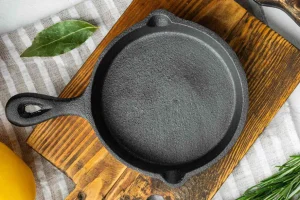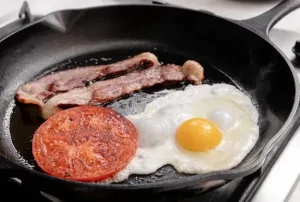For me, cooking in cast iron is the first choice whenever I’m making a good steak or delicious cornbread.
Because of the consistent warmth and homey feel, every dish prepared on a cast iron pan is given a special touch. When you look after cast iron, it can be extremely durable and last for a very long time.
Even so, I’ve learned not all ingredients respond well to being processed in this way.

Shakshuka turned out to be a lesson learned the hard way, because the acid in the tomatoes removed all the seasoning from the pan.
I hadn’t understood that tomatoes, vinegar and citrus acidity may erode cast iron during longer cook times. I cook with cast iron only when I need to speed up what I’m making and rarely use them otherwise.
I occasionally face problems with fish and garlic which both have strong odors.
You might still smell the fish, even after cleaning and baking the skillet at 400°F which can leave a bad taste in your pancakes. When food smells strong, I pick stainless steel or non-stick over regular cast iron.
Then we have eggs. Even though they seem easy to remove, they tend to stay on cast iron, especially well-seasoned pan. It’s often a pain to clean things up afterwards.

I have a non-stick pan always close by for my daily eggs for breakfast.
If I use the right pan, I find it is easier to cook and I save my cast iron for recipes that need it.
